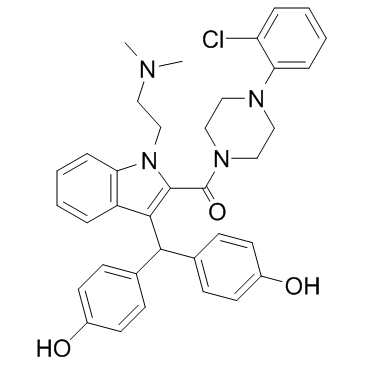| Description |
KW-8232 free base is an anti-osteoporotic agent, and can reduces the biosynthesis of PGE2.
|
| Related Catalog |
|
| Target |
Prostaglandin Receptor[1]
|
| In Vitro |
KW-8232 free base is an anti-osteoporotic agent. KW-8232 reduces the biosynthesis of PGE2 in mouse osteoblastic cells[1].
|
| In Vivo |
KW-8232 (3, 10, 30 mg/kg, p.o.) potently increases the femoral bone mineral density (BMD) of immobilized legs of rats, and affects immobilization-induced abnormal bone turnovrer. KW-8232 markedly decreases urinary calcium excreation in the neurectomized rats only at 30 mg/kg, and highly reduces urinary pyridinoline and deoxypyridionline excretion which are markers of bone resorption in neurectomized rats. KW-8232 inhibits bone loss may be attributed to the lower prostaglandins (PGs)-stimulated bone resorption via regulation of PGE2 production[1].
|
| Animal Admin |
After male Sprague-Dawley rats (5-week-old) are anesthetized with sodium pentobarbital (30 mg/kg, i.p.), a dorsolateral incision is made on the right hip through which the sciatic nerve is exposed, and a 0.5-cm section is excised. The contralateral leg is left intact. KW-8232 is dissolved in distilled water and administered orally at 1, 3, 10, and 30 mg/kg once daily beginning 1 day prior to neurectomy. On day 28, rats are exsanguinated under diethyl ether agter obtaining urine, and their femurs are removed. Bone mineral density (BMD) is determined by dual energy x-ray absorptiometry. Twenty-four hour urine samples are collected from the animals, which are fasted immediately after the final administration of KW-8232[1].
|
| References |
[1]. Uchii M, et al. Effect of KW-8232, a novel anti-osteoporotic agent, on bone loss in sciatic neurectomized rats. Jpn J Pharmacol. 1998 Oct;78(2):241-3.
|
